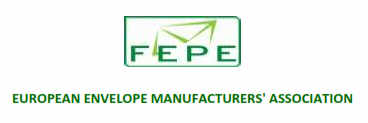
The European Federation of Envelope Manufacturers (FEPE) is keen to make clear that the recent postponement of the Austrian Presidential election was not caused by the reported failure of the envelope but by an alternative carrying device often known as a “self-mailer” or “letter wrap” which is produced in a different manufacturing process.*
The security and protection of data is crucial especially when carrying sensitive information such as people´s votes, and the integrity of the envelope is the proven method of doing so, as envelopes´ contents cannot be accessed without visible traces being made on the envelope.
Austrian Secretary of the Interior Wolfgang Sobotka has announced that a “classic envelope” will be used for the re-run of the elections on 4 December 2016, this time produced by the National Austrian Printing House.
The decision to go back to the classic envelope as used up until 2009 was taken as it had never caused any problems, confirmed Alexander Marakovits, Director of the Communications Competence Center of the Austrian Federal Ministry of Internal Affairs.
For further technical specifications or other questions on the envelope and our industry, please contact Lisa Kretschmann at FEPE: This email address is being protected from spambots. You need JavaScript enabled to view it., +32 2 779 4001, https://youtu.be/d3dyLF-o_D4
* Technically speaking, the Austrian election cards are not envelopes. They are so-called “self-mailers” or “wrap letter mailers”: Pieces or layers of paper that contain printed information, which are folded once and sealed. The information piece does not have an extra protective wrapping around it.
An envelope is a packaging item, the edges of which are folded and sealed securely along three of its sides, the fourth side having a flap closure with an adhesive strip that allows a flat item (paper or card) to be placed inside before being sealed to protect contents.
